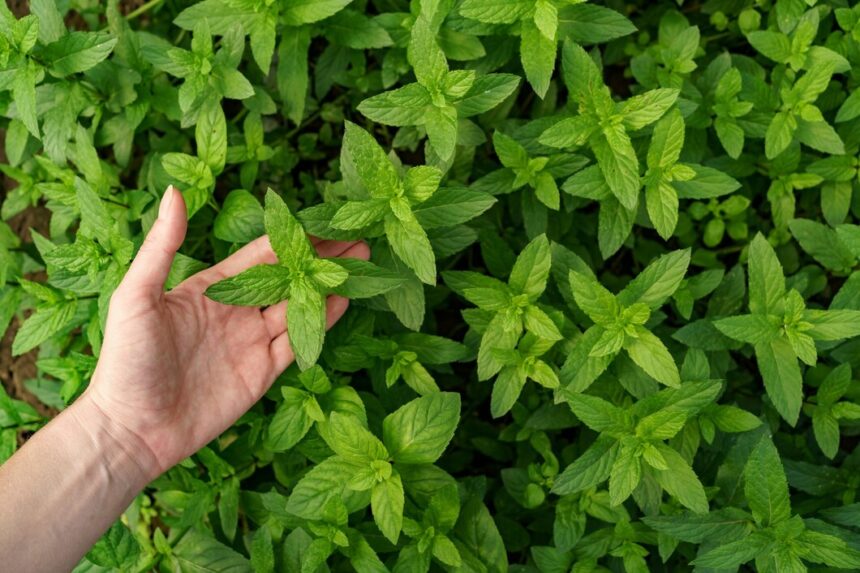Spider mites are tiny pests that can wreak havoc on your mint plants if left unchecked. They are barely visible to the naked eye but can cause significant damage quickly. Here are ten early signs that your mint may be infested with spider mites:
- Spider Webbing: One of the most noticeable signs is the appearance of fine, almost invisible webs on the leaves and stems of your mint. These webs are produced by the mites to protect themselves and their eggs.
- Speckled Leaves: Infested leaves often show small, pale spots or stippling. These spots result from the mites piercing the leaf surface to feed on the plant’s sap.
- Leaf Discoloration: As the feeding damage progresses, leaves may turn yellow or brown. This discoloration is usually more evident on the upper side of the leaves.
- Leaf Drop: If you notice leaves falling off your mint plant prematurely, spider mites could be the cause. The damage from these pests can weaken the leaves, causing them to drop.
- Stunted Growth: Spider mites can hinder the overall growth of your mint plant. If your plant seems to be growing slower than usual or exhibiting unusual growth patterns, it might be infested.
- Silvery Appearance: Affected leaves may take on a silvery or dusty appearance due to the fine feeding damage and the presence of mite webs.
- Tiny White or Red Spots: While spider mites themselves are too small to see without a magnifying glass, their presence may be indicated by tiny white or red spots on the underside of leaves.
- Deformed Leaves: Infestation can lead to distorted or deformed leaves. Look for leaves that appear curled, twisted, or otherwise misshapen.
- Increased Plant Weakness: Plants infested with spider mites may appear generally weak or unhealthy. This weakness can be due to reduced photosynthesis and nutrient uptake.
- Presence of Mites: If you use a magnifying glass or jewelers’ loupe and see tiny, moving specks on the underside of the leaves, these are likely spider mites.
Prevention and Treatment
If you identify these signs early, you can take action to manage and control spider mites. Regularly inspect your mint plants, maintain good garden hygiene, and consider using natural predators like ladybugs or neem oil to manage spider mite populations. Keeping your plants well-watered and avoiding excessive heat can also help minimize mite problems.
Join 'Farmers Mag' WhatsApp Channel
Get the latest Farming news and tips delivered straight to your WhatsApp
CLICK HERE TO JOIN






